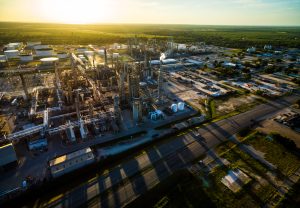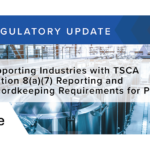
Phase 2 Environmental Site Assessments play a crucial role in assessing potential environmental risks associated with properties in Mansfield. Understanding the purpose, key components, processes, regulatory framework, interpretation of assessment results, and the implications for property transactions is essential for property owners, developers, and investors. This article provides an in-depth overview of Mansfield Phase 2 Environmental Site Assessments to help you navigate the complexities of environmental due diligence.
Understanding Phase 2 Environmental Site Assessments
Phase 2 Environmental Site Assessments play a crucial role in determining the extent of environmental contamination at a specific site. These assessments are a vital step in the environmental due diligence process, providing valuable information for property owners, developers, and regulatory agencies.
The Purpose of Phase 2 Assessments
The primary purpose of Phase 2 Environmental Site Assessments is to identify potential environmental contaminants and assess the level of contamination at a specific site. These assessments are typically conducted after a Phase 1 assessment raises suspicion of contamination or the presence of hazardous materials. By conducting a Phase 2 assessment, environmental professionals can gather data to evaluate potential risks to human health and the environment, as well as develop remediation plans if necessary.
Key Components of Phase 2 Assessments
Phase 2 assessments involve a comprehensive investigation of the site, which includes soil, groundwater, surface water, and air quality sampling and analysis. The assessment also includes thorough documentation of site conditions, historical site usage, and any potential sources of contamination. This detailed investigation helps to create a complete picture of the environmental conditions at the site, allowing for informed decision-making regarding future land use and development.
Furthermore, Phase 2 assessments often involve the use of advanced technologies and sampling techniques to accurately assess the presence and distribution of contaminants in the soil and water. Environmental professionals may employ methods such as soil boring, groundwater monitoring wells, and soil vapor sampling to collect samples for laboratory analysis. These techniques help to identify the nature and extent of contamination, providing essential data for risk assessment and remediation planning.
The Process of Conducting Phase 2 Assessments in Mansfield
Initial Site Inspection
The process begins with an initial site inspection, where environmental professionals assess the site for any visible signs of contamination or potential hazards. This inspection helps identify areas of concern and guides the subsequent sampling and analysis efforts.
During the initial site inspection, experts pay close attention to any historical land use practices that may have contributed to contamination. They also look for any physical features, such as underground storage tanks or evidence of spills, that could indicate potential environmental risks. By thoroughly examining the site, professionals can create a comprehensive plan for sampling and analysis that targets the most critical areas.
Sampling and Analysis
Once areas of concern are identified, soil, groundwater, surface water, and air quality samples are collected and sent to accredited laboratories for analysis. These samples provide valuable insights into the presence and extent of contamination, helping to determine potential risks to human health and the environment.
Sampling methods vary depending on the suspected contaminants and the site’s characteristics. For example, soil samples may be collected at different depths to assess the vertical extent of contamination, while groundwater samples may be taken from monitoring wells strategically placed around the site. The analysis of these samples involves sophisticated techniques to detect and quantify various pollutants accurately.
Report Preparation
Based on the findings from the sampling and analysis, a detailed report is prepared, documenting the assessment process, results, and recommendations. The report serves as a crucial record of the site’s environmental condition and provides guidance for further action, if necessary.
In addition to presenting the data collected during the assessment, the report often includes a risk assessment that evaluates the potential impact of contamination on human health and the environment. Recommendations for remediation or further investigation are tailored to address the specific contaminants found and the site’s intended land use. This comprehensive report is essential for stakeholders, regulatory agencies, and future developers to make informed decisions about the site.
Regulatory Framework for Phase 2 Assessments in Mansfield
Local Environmental Regulations
Mansfield follows specific environmental regulations and guidelines that govern Phase 2 assessments. It is important to adhere to these local regulations to ensure compliance and accurate assessment results.
These local environmental regulations in Mansfield are designed to protect the natural resources and ecosystems within the region. By following these guidelines, Phase 2 assessments can help identify potential environmental risks and ensure that appropriate mitigation measures are put in place to safeguard the environment.
State and Federal Oversight
In addition to local regulations, Phase 2 assessments in Mansfield are subject to state and federal oversight. Compliance with these regulations ensures that assessments are conducted with standardized protocols and in accordance with best industry practices.
State and federal oversight of Phase 2 assessments play a crucial role in maintaining consistency and quality across environmental assessments conducted in Mansfield. By adhering to these higher-level regulations, assessment reports can be trusted by regulatory authorities and stakeholders, fostering transparency and accountability in the assessment process.
Interpreting Phase 2 Assessment Results
Identifying Potential Environmental Risks
The results of Phase 2 assessments provide valuable information on potential environmental risks associated with a site. These risks may include contaminated soils, groundwater contamination, the presence of hazardous substances, or other ecological concerns. Identifying these risks is crucial for determining the appropriate mitigation strategies.
Moreover, the identification of potential environmental risks through Phase 2 assessments plays a significant role in safeguarding human health and the environment. By pinpointing areas of concern, stakeholders can take proactive measures to prevent further contamination and protect surrounding ecosystems. This process also aids in complying with regulatory requirements and demonstrating a commitment to environmental stewardship.
Mitigation Strategies for Identified Risks
Once potential environmental risks are identified, it is essential to develop and implement appropriate mitigation strategies. These strategies may involve remediation efforts to clean up contaminated areas, implementing containment measures, or implementing long-term monitoring to ensure ongoing compliance with environmental standards.
Furthermore, the selection of mitigation strategies should be based on a thorough understanding of the specific risks present at the site. Tailoring the response to address the unique characteristics of the contamination not only enhances effectiveness but also minimizes costs and time associated with remediation activities. Effective communication with regulatory agencies and stakeholders is also paramount during this phase to ensure transparency and alignment on the chosen mitigation approaches.
The Role of Phase 2 Assessments in Property Transactions
Impact on Property Value
Phase 2 Environmental Site Assessments can significantly impact property value. The presence of environmental contamination or hazards can decrease property value, while a clean bill of health can enhance the marketability of the property.
Legal Implications for Property Owners
Property owners have a legal responsibility to address any environmental concerns associated with their properties. Conducting Phase 2 assessments demonstrates due diligence and can help property owners fulfill their legal obligations, avoid liability, and facilitate seamless property transactions.
By understanding Mansfield Phase 2 Environmental Site Assessments and their significance in property transactions and environmental risk management, you can make informed decisions, protect your investments, and ensure compliance with applicable regulations. Remember, conducting comprehensive assessments and addressing any identified risks promptly is essential for sustainable development and the protection of human health and the environment.
If you’re ready to take the next step in your Mansfield property transaction or need expert guidance on environmental risk management, ESE Partners is here to support you. Our team of skilled environmental engineers and scientists specialize in Phase 2 Environmental Site Assessments, offering comprehensive solutions tailored to your unique needs. With our commitment to innovation, sustainability, and community improvement, we ensure that your business moves forward responsibly. Don’t let environmental concerns stand in the way of your progress. Request A Proposal today and partner with us for honest, quality-driven results.








